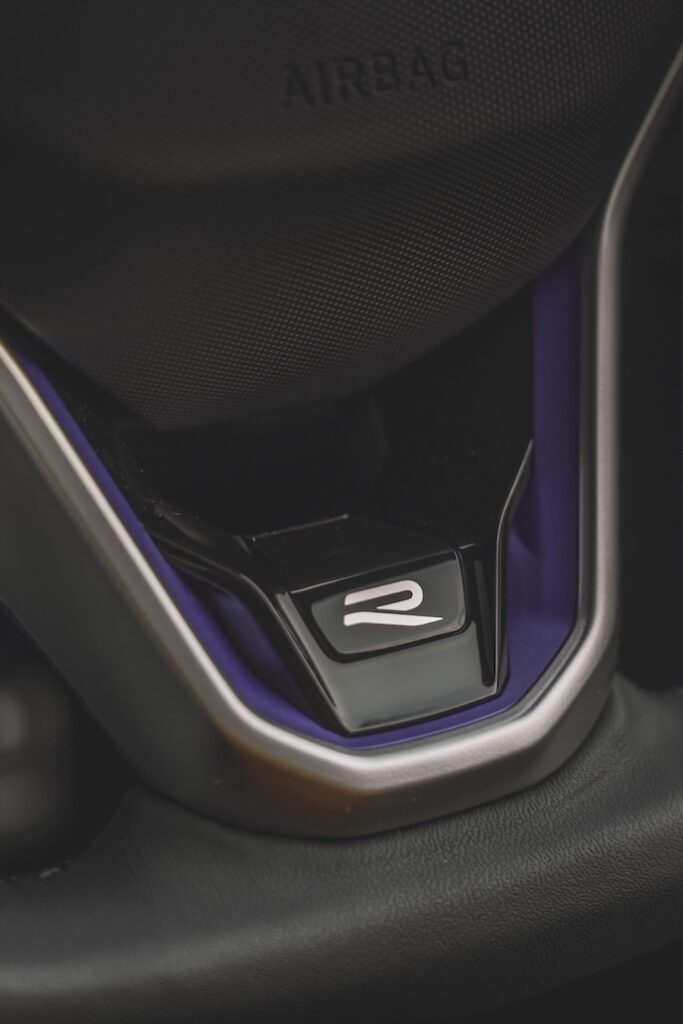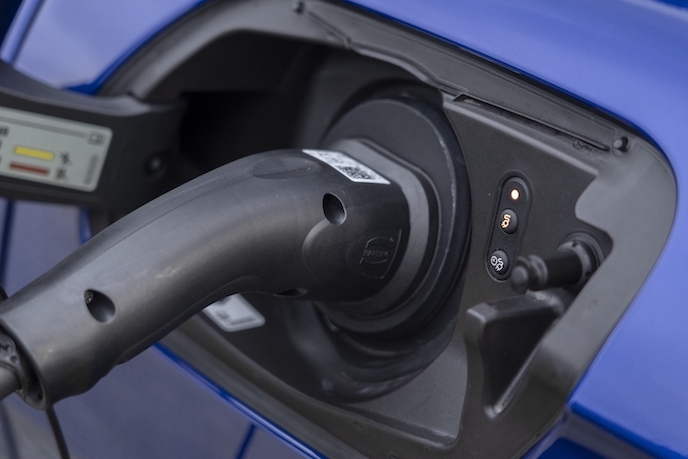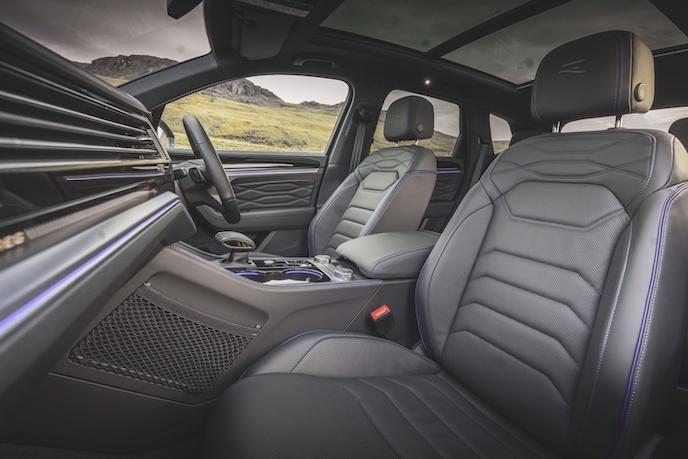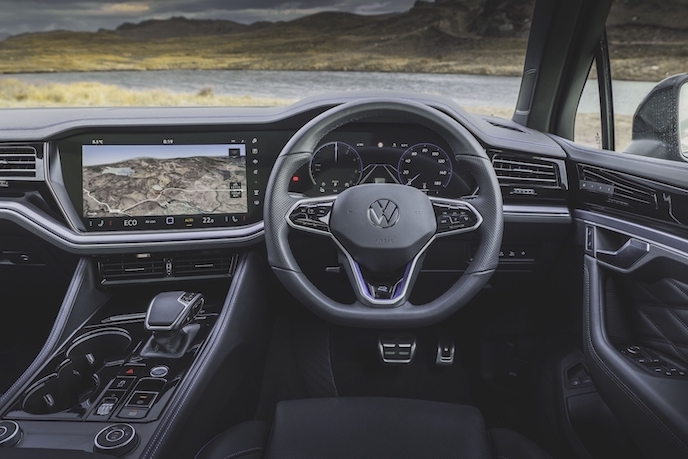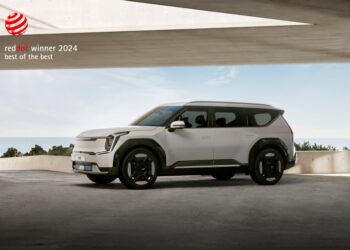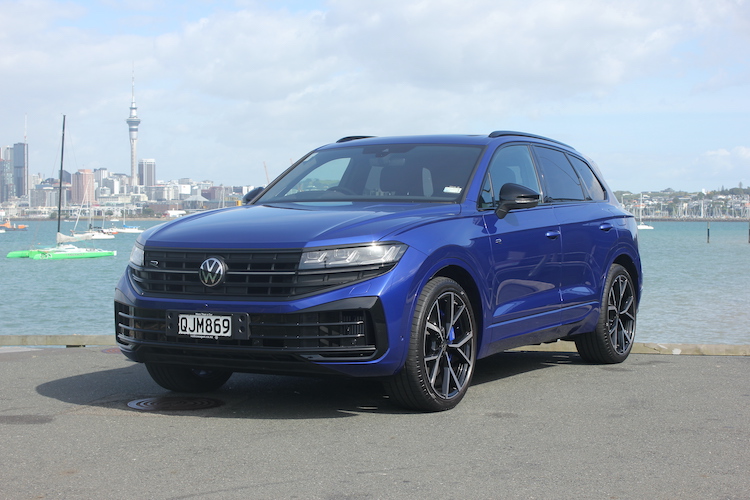
More than 15 years ago, Volkswagen New Zealand unleashed the technically advanced 2008 Touareg R50 V10 TDi (258kW/850Nm) as its flagship SUV.
The $179,990 tour-de-force turbo-diesel was a luxury autobahn cruiser with permanent 4Motion all-wheel drive and a low-range transfer case, making it more competitive with the Mercedes-Benz M-Class and Range Rover Sport of the day.
Fast-forward to 2024, and Volkswagen has launched a more powerful Touareg R, a 340kW/700Nm Plug-in Hybrid Electric Vehicle (PHEV).
It is Volkswagen’s most powerful production car yet, starting at $159,990. It comes with a comprehensive specification. The only two extra-cost options are the choice of paint colour and having the 22-inch Estoril alloy wheels painted black.
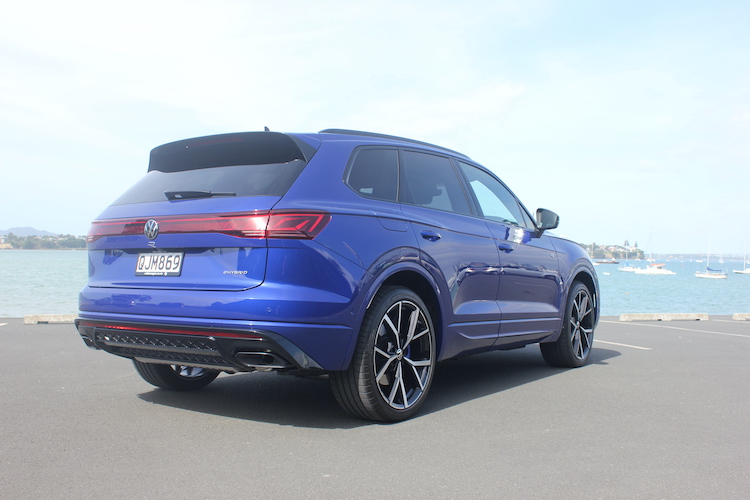
An EV for the city and an R for the country
The Touareg R combines a turbocharged 3-litre V6 petrol engine with 250kW and 450Nm of torque with a 100kW electric motor with 400Nm of torque for a maximum system power of 340kW plus a maximum torque of 700Nm.
The kick-down function always activates the V6 engine, which is also boosted by full electric power. This helps accelerate the Touareg R from 0 to 100km/h in 5.1 seconds.
A Type 2 to power point and a Type 2 to Type 2 cable are standard, providing at-home and on-road charging flexibility for 51km of EV-only driving range.
It will take 8 hours to charge the Touareg R at home overnight using a domestic power socket or 2 hours from a 7kW Wallbox-style charger.
The combined cycle fuel consumption of 3.3L/100 km includes the EV-only driving range in the total figure. Drivers could theoretically get lower—or close to zero petrol—usage with regular charging.
When the EV-only driving range concludes, the Touareg R operates as an ‘e-hybrid’ that remains more efficient than previous V8 and V10 models.
As a daily driver, the Touareg R can deliver up to 53km of pure electric range, but this will depend on variables such as ambient temperature, load, and climate control air conditioning use. During our test week, we found the mid-40s closer to the mark.
For most of our time with the vehicle, we couldn’t fully recharge the Touareg R every night, so our combined cycle consumption crept up to 9L/100km, which is still exceptional for a large and heavy SUV.
Comprehensive specification
The Touareg R arrives with 22-inch Estoril alloys, 19-inch front and 18-inch rear ventilated disc brakes with blue callipers and R logo, air suspension, high gloss black roof rails and window surrounds, black exterior mirror shells, blacked-out front grille and rear apron, black sports exhaust, ‘R’ logo projection from the front mirrors, direct tyre pressure monitoring, power latching doors, electric tailgate and panoramic sunroof with electric blind.
Night Vision is standard on the Touareg R and is an R-exclusive feature in the range. It incorporates a thermal imaging camera to detect humans and wildlife via a Digital Cockpit Pro display to improve night driving safety.
Dynamic Road Sign Display and IQ join it.Light Matrix LED headlamps with adaptive high-beam, Manoeuvre Brakes front and rear, Adaptive Cruise Control with Travel Assist, Lane Assist, Emergency Assist, Proactive Occupant Protection, and Side Assist with Front and Rear Cross Traffic Alert.
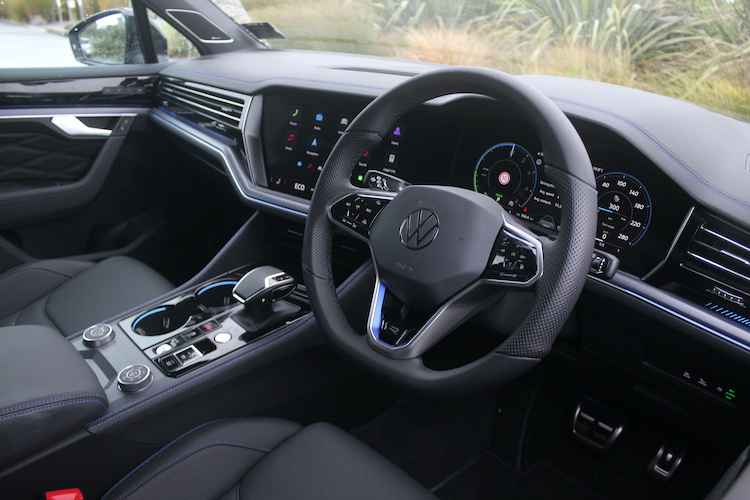
Inside, the Touareg R features the Innovision cockpit (15″ Discover Premium & 12″ Digital Cockpit Pro), Wireless App-Connect, wireless smartphone charging, a Dynaudio premium sound system, and 5x USB-C ports between the front and rear.
Black Puglia leather seat upholstery, front seats with memory settings, heated front and outboard rear seats, R sports steering wheel, quad-zone climate control, windshield projected head-up display, illuminated front scuff plates with R logo, power-adjustable steering column with memory, plus brushed aluminium decorative inserts complete comprehensive specification.
Driving impressions
Like its SUV competitors, the BMW X5, the Mercedes-Benz GLE, and the Range Rover Sport, the Touareg R has an imposing presence on the road and a spacious and luxurious interior that comfortably seats five occupants.
Make no mistake—this car has some solemn mass, with a tare weight of 2345kg, but the combination of the torque from the petrol engine and the electric motor provides a lithe response from the throttle that belies the vehicle’s proportions.
Accelerating such mass is one thing, but slowing it down is another. Fortunately, those Blue brake callipers don’t just look pretty; they arrest the velocity of a dynamically-driven Touareg R with poise and confidence.
Finding some of the functions in the touchscreen menus took some acclimation, but there are ‘buttons’ for the driver assistance settings, park assist, front and rear demist, and seat heaters. The heating steering wheel can be activated from the touch screen or by a button on the steering wheel, which seemed a little excessive for one function.
The touchscreen’s saving grace is the 360-degree area view camera that, combined with the parking sensors in the front and rear bumpers, makes it easy to retrieve the Touareg R from a tight parking space. There is also an automated parallel parking function if required.
Its forte is long-distance cruising. Thanks to the air suspension and the eight-speed automatic, the Touareg R wafts along a motorway or state highway with little wind noise or tyre roar from the 285/35/R22 Bridgestone Potenza tyres fitted to the Estoril alloy rims.
Overall, we felt that the Touareg R acquitted itself with aplomb as the first member of the high-performance Volkswagen R family to offer PHEV technology, and we look forward to seeing more models being presented with it.
